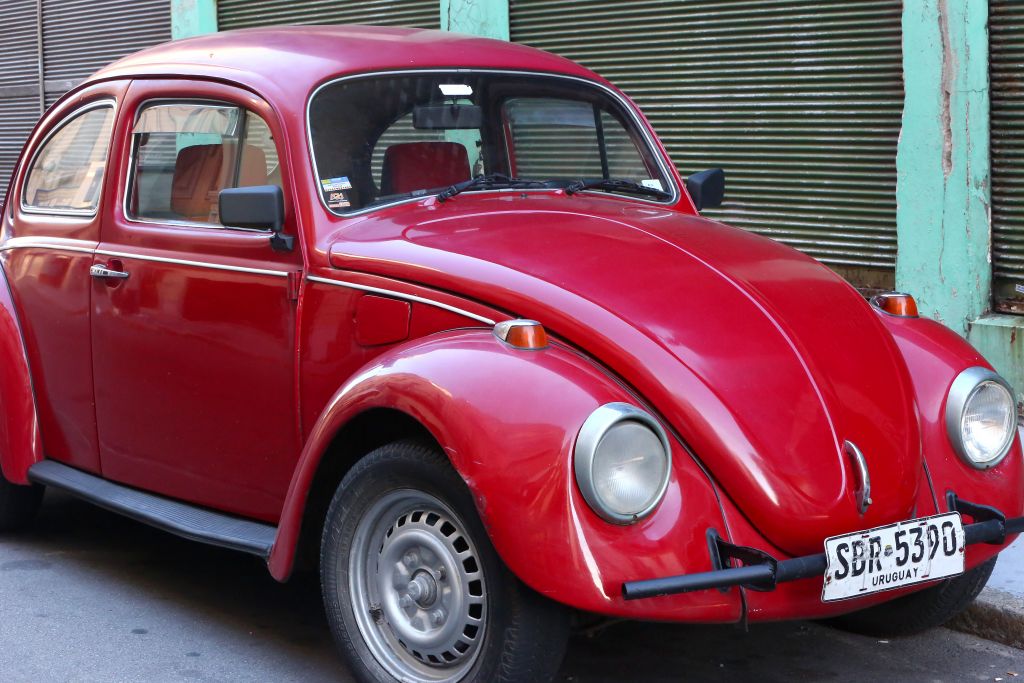Montevideo Beaches
Montevideo is located near the place where the La Plata River flows into the ocean. A beach line of over 20 km stretches along the estuary. The nearest beach was just a five-minute walk from our house, so we often spent time there.
By the way, the river waters were not suitable for swimming. The water was murky, thick, and full of seaweed and sand lifted from the bed by river currents. However, the beaches themselves were clean and had soft, yellow sand that the boys adored so much. Equipped with sticks, spades, and toys, Michael Jr and Robert could play at the beach for hours.
There were always lots of people at the shore. Locals like coming here to sunbathe, do sports, or just relax and chat.
We often saw Argentinian tourists there. As for other foreigners, there are only a few of them in the city.
The Rambla waterfront, a huge road connecting the city centre with distant districts, stretches along the river. There’s a vast pedestrian zone near the roadway, and we could walk along it for hours. Locals like jogging and doing sports here, while youth has fun roller-skating and skateboarding.
There are one-day tours from the Montevideo port to the Isla de Lobos that managed to get the status of a national nature reserve. The shore of the small, rocky piece of ground—the island is 1.2 km long and less than 800 m wide—is crowned with a 59-metre lighthouse built by the Spanish in the 19th century. It is the tallest lighthouse in Uruguay.
The name of the place is translated as ‘the island of wolves’, although these predators don’t live in the nature park. But the ones that do live here are the world’s largest colony of South American sea lions and fur seals. These charming sea animals attract many tourists here, who go on a tour around Lobos to see them.
Centre of Montevideo
While Buenos Aires has entire districts made up of old European-style buildings, it seemed to us that in Montevideo, no one cared about preserving the historical heritage or trying to make the city more attractive to tourists. The capital certainly has beautiful buildings, but they are mainly a few dwelling houses. As for colonial constructions, they are concentrated in the central part of Montevideo.
The capital’s oldest square is La Plaza de la Constitución (Constitution Square), where the Montevideo fortress was built in the 18th century.
Nowadays, the square is a cosy place planted with trees, resembling a small park. The walkways crossing the square lead to an elegant fountain, decorated with sculptures of angels, and the Metropolitan Cathedral, a huge neoclassic construction built in the early 19th century.
Walking further along the Sarandí pedestrian street, you can go through the gate of the old fortress and get to Independence Square, the main tourist attraction. Plaza Independencia is surrounded by interesting buildings, including the Executive Tower, the residence of the President of Uruguay.
There’s also Palacio Salva in the art deco style built in 1927. The skyscraper resembles the Palacio Barolo that we saw in Buenos Aires, which is no wonder as both buildings were designed by the same architect, Mario Palanti.
The elegant neoclassical Solís Theatre, the oldest theatre in Uruguay, is located near the square.
We found it odd that there were almost no people on the streets. While the city centre in European cities is always crowded with tourists, Montevideo’s Old Town was almost empty, although it was Sunday.
The Fountain of Lovers – one of the most romantic places in Montevideo. It is believed that lovers who hang here a lock with their initials will remain together forever. The fencing around the fountain is already completely covered with these symbols of love.
However, that let us walk along the streets unhurriedly, have a good view of all the landmarks we wanted to see, and take great photos.
Montevideo Museums
Montevideo offers quite a limited choice of cultural entertainments. There are certainly interesting museums in the city, but both their size and the number of exhibits are very modest.
For instance, one day we visited the Naval Museum located near the Rambla waterfront. The local collection includes maps, photos, plans, and old documents showing the history of the Uruguayan Navy. The exhibits were interesting, but we expected more from the capital museum.
We found the Gaucho Museum rather unusual. Gauchos are the Uruguayan equivalent of American cowboys. These nomadic herders inhabited Uruguay a few centuries ago. The museum displays a collection of old weapons, colourful ponchos, working tools, household things, and other stuff that cowboys used in their everyday life.
The National Museum of Visual Arts lets visitors see the paintings by famous Uruguayan and Latin American artists, although the collection also has works by European artists, including a couple of works by Picasso.
Montevideo’s Technical Museum (Espacio Ciencia) is also worthy of attention. It has a great deal of interactive exhibits, educational stands, and other things demonstrating the laws of physics and chemistry vividly. The place is especially informative for children, but Robert and Michael Jr were too small at the moment to understand and get interested in such things.
Montevideo Parks
There are only a few large park areas in Montevideo, but we often visited them in search of playgrounds and other entertainments for the boys. Many locals like spending their free time in Central Park (Parque de los Aliados) located near the city centre.
Parque Rodó with a lake in the centre of it is also considered very beautiful. Walking along the palm alleys, you can admire the view of the estuary of the Río de la Plata, as the park is situated on a hill.
But we found Parque Prado, a huge green space of 102 hectares, the most attractive. Vast lawns, small woods with paths laid through them, elegant bridges across the Miguelete Creek all provide the perfect conditions for calm, peaceful walks.
The park also has a beautiful rosery with a huge collection of roses of different varieties and sizes and a sophisticated Japanese garden.
There’s also a playground. It was nothing special, but Robert and Michael Jr liked playing there, as playgrounds in general are rare here.
On the whole, the situation with children’s recreation areas in Montevideo is as disappointing as in Buenos Aires: there are few playgrounds with swings; they are also fenced and locked at night.
Public Transport
Local citizens usually travel around Montevideo by public buses. Land routes connect all parts of the city, and buses circulate strictly according to the timetable. However, while buses in Buenos Aires are mostly new, public transport in the Uruguayan capital leaves much to be desired.
One day, we decided to get to the city centre not by taxi. The ride in an old bus took us about 40 minutes, and it shook terribly through the whole ride. It was a curious experience taking into account that Montevideo was considered one of the richest and most developed cities in Latin America.
The city streets are flooded with well-preserved (or skillfully restored) retro cars, polished brilliant.
The only advantage is the well-functioning Uber service. There are lots of taxis, they come quickly, and drivers are nice, polite, and courteous. As a matter of fact, that’s how it should be, but travelling around Latin American countries, we forgot what a European-like service was like and were pleasantly surprised to see it here.
Local Healthcare
During our stay in Uruguay, Michael Sr started to feel pain in his leg. We had pills, but still decided to consult a doctor and set aside some time to visit a hospital.
The “large central regional clinic” that we found through Google turned out to be an old hospital without clear driveways and ways to access the building. A large number of people waiting for their consultation gathered there. After standing in a queue to the front desk, we explained our situation and asked to get us a doctor’s appointment. We didn’t have insurance, so we realized we’d have to pay for the consultation, but we were stunned by the cost—$200 for a simple consultation even without an X-ray and blood tests. Moreover, the fact that we paid didn’t free us of waiting in a queue. We were warned that we’d have to wait for 3-4 hours, so we decided to leave without a doctor’s examination.





























Leave A Comment